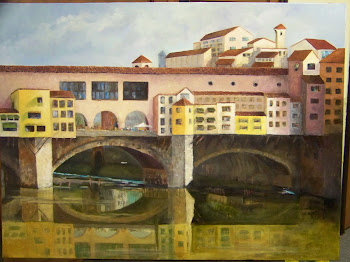My friends feel that if I should happen to hit PowerBall, I would be on the next plane to Italy. I am afraid they are absolutely correct! I might call my kids to see if anyone else could have their bags packed and be at the airport before the flight left the ground....or maybe I would just call them from Lake Como. My passport is good until October, 2012, so I must remember to have it updated....
you just never know when PowerBall might hit! I need to be prepared!
There has been sad news from Italy..."Italians open investigation into flooding of Cinque Terre
An investigation has been opened in Italy into whether floods that devastated a World Heritage-listed coastline were the fault of official negligence and illegal building."Sort of sounds like New Orleans, doesn't it?The headlines have been..."Villages all but wiped out as storms batter Italy's 'Cinque Terre' " and
"Five people have been killed and another six are missing after storms and torrential rain caused extensive floods in northern Italy."
Five fishing villages nestled into the steep coastline of the Ligurian Riviera make up the Cinque Terre, a UNESCO World Heritage Site. The best way to discover the Cinque Terre is on foot. As you walk along ancient walking trails clinging to the steep cliffs, you are amazed at the terraced vineyards and enjoy the tranquillity of the pine and chestnut forests of the Cinque Terre National Park.
Known as Italy’s “Flower Riviera” the Ligurian Riviera is a delight for all the senses. Waves crash below coastal footpaths, wild flowers and vineyards surround you, the smell of fresh coffee tempts you into local cafes. The five fishing villages of the Cinque Terre have remained almost untouched by modern developments and are an idyllic walking escape. Until the last few days.....
 |
| Vernazza,before the mudslides |
Along Vernazza's main street, the ground floors of buildings are still completely buried, and the harbor is filled with mud and rocks. Several fatalities have been reported, and a few people are still missing."
I have a feeling the people of Cinque Terre will bring their home back to normal as quickly as possible. They have the upcoming winter months to prepare for next springs tourist season. As tough as that job may seem, the Italians are tougher. During World War II, many young men from the Cinque Terre fought for the resistance against the fascist regime of Benito Mussolini, and the subsequent Nazi German occupation of Italy. Not all Italians had that fighting spirit, unfortunately. But the men of Cinque Terre most certainly did.
I certainly hope the smell of the sea rising up the steep cliffs with vineyards clinging to their sides, the aroma of herbs growing wild and the scent of flowers ornamenting the narrow shelves will return. The vineyards and olive groves were everywhere on the hills, let's hope wine and olive oil will be present on the tables once again.. When it is time to go to the table, the fragrance of the typical Pesto sauce, fried fish and anchovies, vegetable casseroles and fish with aromatic fillings is so enticing, all you want to do is enjoy your food
while sitting perched on the terraces overlooking the beautiful seascape of the famous Gulf of Levanto, La Spezia and Portovenere
Some of the most famous foods of Cinque Terre that you will remember forever are the dry wine (d.o.c.), simply called Cinque Terre ;Sciacchetrà, rare and vintage strong sweet wine, made from dried grapes ; the pesto sauce of the region; salted anchovies in Monterosso olive oil ;all of the many fish specialities and of course, last but not least, Limoncino, a liqueur made from lemons (lemons are celebrated during the Feast of Lemon on Pentecost)
Limoncino, also known as Limoncello in other regions of Italy.
The lemons are organically produced,picked early in the season, selecting only the best fruit from the venerable lemon grove to ensure a high essential oil content.
BURANCO Limoncino is made the way it always has been in Monterosso. Wafer-thin yellow lemon skins are peeled by hand and combined with alcohol and sugar. Its flavours and aromas speak of fruit slowly matured on the bough in sun-drenched lemon groves.
I think it is only fair that we all go buy a bottle ot two to help the people of Monterosso get back on their feet. Besides, I love to cook with it! You can make......
Limoncino Cheesecake Squares
12 to 16 servings
Nonstick cooking spray
8 ounces purchased biscotti
6 tablespoons (3/4 stick) unsalted butter, melted
3 tablespoons grated lemon zest
1 (12-ounce) container fresh whole milk ricotta, drained, at room temperature
2 (8-ounce) packages cream cheese, at room temperature
1 1/4 cups sugar1/2 cup limoncino
2 teaspoons vanilla extract4 large eggs, at room temperature
Directions:
Preheat the oven to 350 degrees F. Spray the bottom of a 9 by 9 by 2-inch baking pan with nonstick cooking spray.
Finely grind the biscotti in a food processor. Add the melted butter and 1 tablespoon of lemon zest, and process until the crumbs are moistened. Press the crumb mixture over the bottom (not the sides) of the prepared pan. Bake until the crust is golden, about 15 minutes. Cool the crust completely on a cooling rack.
Blend the ricotta in a clean food processor until smooth. Add the cream cheese and sugar and blend well, stopping the machine occasionally and scraping down the sides of the work bowl. Blend in the limoncello, vanilla, and remaining 2 tablespoons of lemon zest. Add the eggs one at a time, and pulse just until blended. Scrape down the sides of the bowl as needed.
Pour the cheese mixture over the crust in the pan. Place the baking pan in a large roasting pan. Pour enough hot water into the roasting pan to come halfway up the sides of the baking pan. Bake until the cheesecake is golden and the center of the cake moves slightly when the pan is gently shaken, about 1 hour (the cake will become firm when it is cold).
Transfer the cake to a rack; cool 1 hour. Refrigerate until the cheesecake is cold, at least 8 hours and up to 2 days. Cut the cake into squares and serve.
Remember, we are eating this cheesecake for Cinque Terre! Al kidding aside, Cinque Terre is an unbelievable spot on this globe. Let's hope they can come back and thrill the world travelers with there beautiful vistas once again.
Lift a small glass of Limoncino in a toast to Cinque Terre! Cin Cin!















